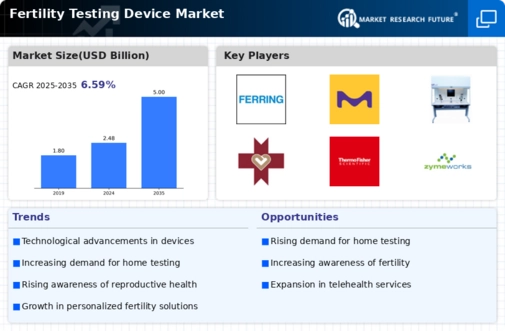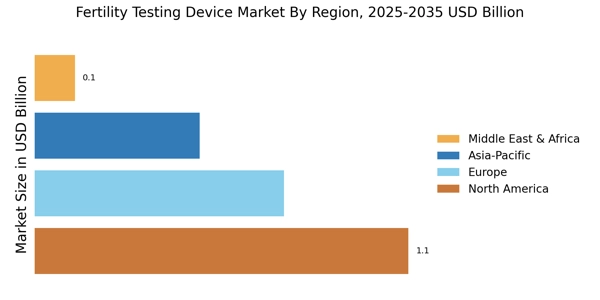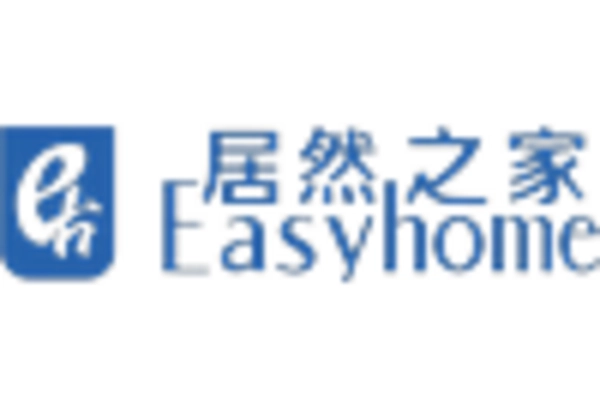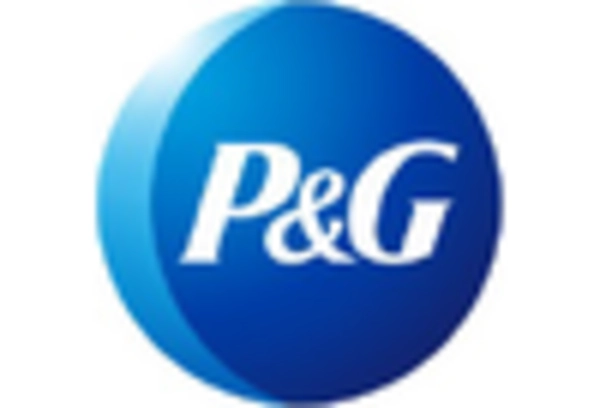Rising Infertility Rates
The Fertility Testing Device Market is significantly influenced by the rising rates of infertility, which have been reported to affect approximately 15% of couples worldwide. This increase in infertility cases has led to a heightened demand for fertility testing devices, as individuals seek to understand their reproductive health better. The growing awareness surrounding infertility issues has prompted many to invest in at-home testing solutions, which are perceived as more accessible and less invasive. Furthermore, the increasing prevalence of lifestyle factors contributing to infertility, such as stress and poor diet, is likely to sustain this demand. As more individuals recognize the importance of early detection and intervention, the market for fertility testing devices is expected to expand further.
Shift Towards Preventive Healthcare
The Fertility Testing Device Market is benefiting from a broader shift towards preventive healthcare, where individuals are increasingly proactive about their health. This trend is particularly evident in reproductive health, as more people seek to understand their fertility status before attempting to conceive. The rise of preventive measures is reflected in the growing sales of fertility testing devices, which empower users to take charge of their reproductive health. Market data indicates that the preventive healthcare sector is expected to grow significantly, with fertility testing devices playing a crucial role in this transformation. As consumers become more health-conscious, the demand for reliable and user-friendly fertility testing solutions is likely to increase, further propelling the market.
Increased Investment in Fertility Research
The Fertility Testing Device Market is witnessing increased investment in fertility research, which is driving innovation and development in testing devices. Governments and private organizations are allocating substantial funds to explore new technologies and methodologies for fertility assessment. This influx of investment is expected to lead to the introduction of more advanced and accurate fertility testing devices, catering to the evolving needs of consumers. Additionally, research initiatives aimed at understanding the underlying causes of infertility are likely to enhance the credibility and effectiveness of fertility testing solutions. As a result, the market is poised for growth, with new entrants and established players alike focusing on research-driven innovations.
Growing Acceptance of Home Testing Solutions
The Fertility Testing Device Market is experiencing a growing acceptance of home testing solutions, which are becoming increasingly popular among consumers. The convenience and privacy offered by at-home fertility tests appeal to many individuals who prefer to manage their reproductive health discreetly. Market analysis suggests that the demand for home testing devices is on the rise, as they provide a cost-effective alternative to traditional clinical testing. This trend is further supported by advancements in technology that enhance the accuracy and reliability of home tests. As more consumers recognize the benefits of these solutions, the market for fertility testing devices is likely to expand, reflecting a shift in consumer preferences towards more accessible and user-friendly options.
Technological Advancements in Fertility Testing Devices
The Fertility Testing Device Market is experiencing a surge in technological advancements, which enhances the accuracy and efficiency of fertility assessments. Innovations such as smartphone connectivity and AI-driven analytics are becoming increasingly prevalent. These technologies allow users to monitor their reproductive health in real-time, providing personalized insights. According to recent data, the market for fertility testing devices is projected to grow at a compound annual growth rate of approximately 8% over the next five years. This growth is largely attributed to the integration of advanced technologies that facilitate user-friendly experiences and improve diagnostic capabilities. As a result, the demand for sophisticated fertility testing devices is likely to increase, driving the overall market forward.


















Leave a Comment